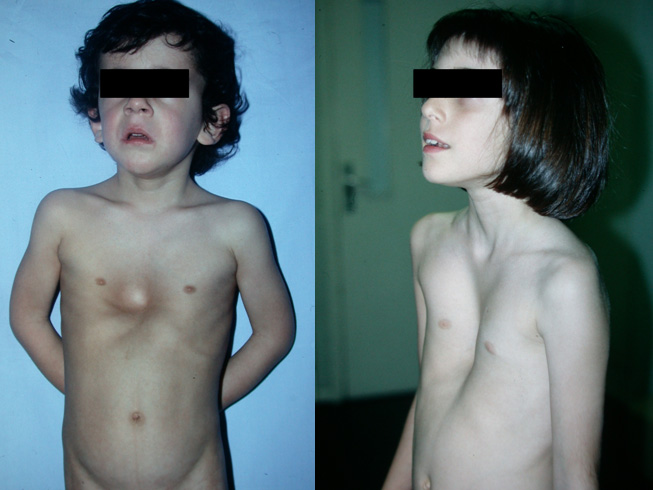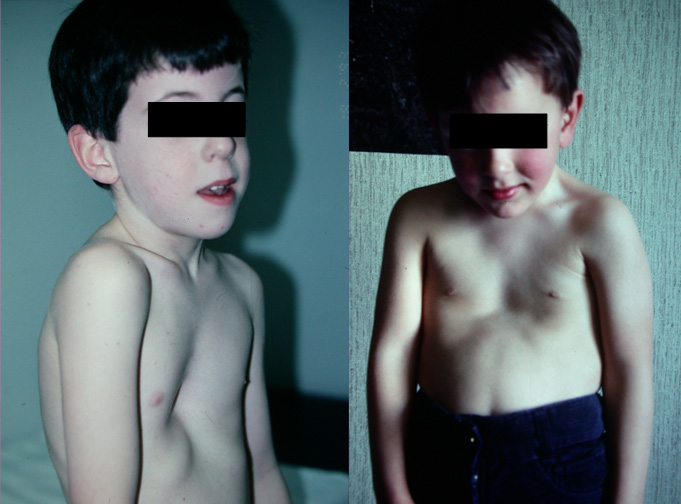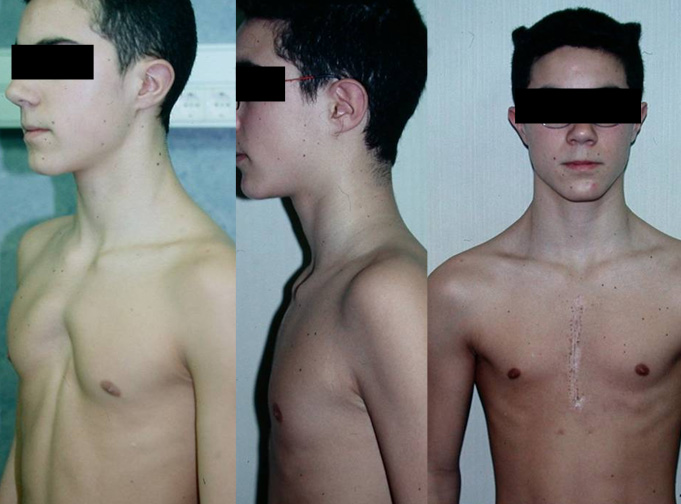Pectus Excavatum
Depending on the depth, extension and position of the funnel, pectus excavatum may adopt different forms. The most frequent are those that have the funnel centred and symmetric above their inferior third of the sternum and the last parasternum cartilages (Type I); less frequent are the asymmetric forms with a long funnel which affects a great part of the sternum and adjacent cartilages (Type II); more odd are the asymmetric forms of the funnel (Type III). This anomalous position of the cartilages and the sternum, which are curved towards the vertebral column, drives to a decrease of the previous-past diameter of the thoracic box, which sometimes affects the pulmonary and cardiac function.






